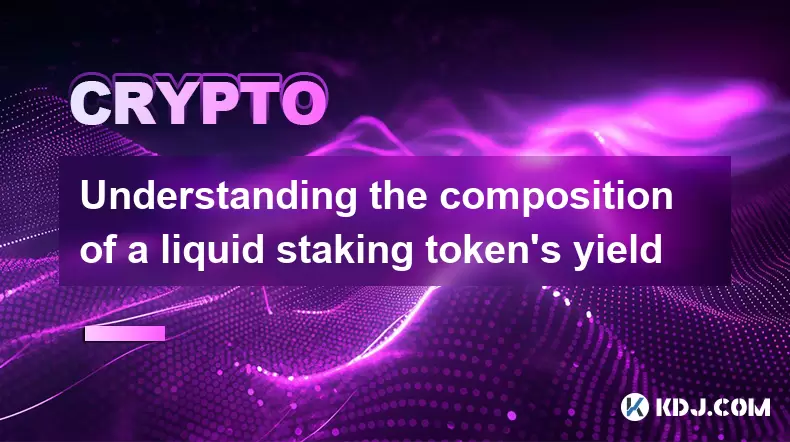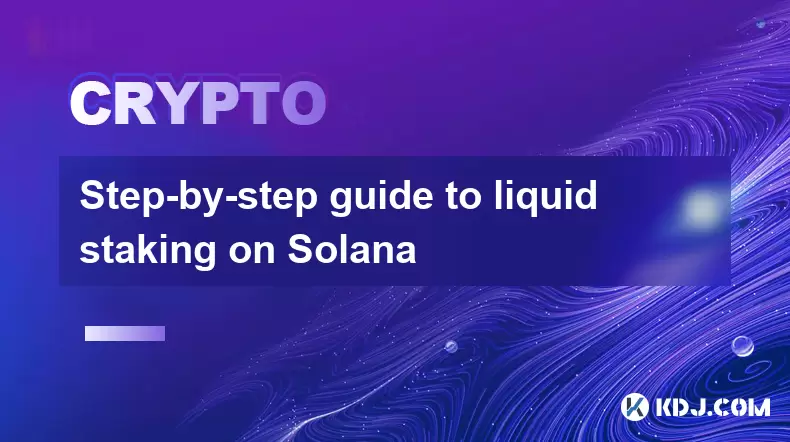-
 Bitcoin
Bitcoin $118900
0.42% -
 Ethereum
Ethereum $3710
-2.88% -
 XRP
XRP $3.513
-2.96% -
 Tether USDt
Tether USDt $1.000
-0.01% -
 Solana
Solana $203.0
3.65% -
 BNB
BNB $765.5
-1.29% -
 USDC
USDC $0.9998
0.00% -
 Dogecoin
Dogecoin $0.2671
-4.18% -
 Cardano
Cardano $0.8817
-3.63% -
 TRON
TRON $0.3139
-0.64% -
 Hyperliquid
Hyperliquid $44.34
-5.45% -
 Stellar
Stellar $0.4637
-4.08% -
 Sui
Sui $3.908
-2.59% -
 Chainlink
Chainlink $19.34
-2.62% -
 Hedera
Hedera $0.2712
-3.77% -
 Avalanche
Avalanche $24.97
-4.13% -
 Bitcoin Cash
Bitcoin Cash $519.8
-1.48% -
 Shiba Inu
Shiba Inu $0.00001518
-3.74% -
 Litecoin
Litecoin $115.6
-2.21% -
 Toncoin
Toncoin $3.460
3.68% -
 UNUS SED LEO
UNUS SED LEO $8.977
-0.07% -
 Polkadot
Polkadot $4.460
-2.96% -
 Uniswap
Uniswap $10.53
-5.43% -
 Ethena USDe
Ethena USDe $1.001
0.01% -
 Monero
Monero $323.6
-0.36% -
 Pepe
Pepe $0.00001379
-2.60% -
 Bitget Token
Bitget Token $4.772
-3.90% -
 Dai
Dai $0.9999
0.00% -
 Aave
Aave $307.5
-6.66% -
 Bittensor
Bittensor $441.8
0.84%
Can I use liquid staking tokens as collateral?
Liquid staking tokens like stETH enable users to earn staking rewards while using them as collateral on DeFi platforms like Aave and MakerDAO to borrow assets or generate DAI.
Jul 22, 2025 at 05:36 pm

Understanding Liquid Staking Tokens
Liquid staking tokens are derivatives that represent staked assets on a proof-of-stake (PoS) blockchain. When users stake their cryptocurrency via a liquid staking protocol, they receive a tokenized version of their staked asset in return. For example, staking ETH on platforms like Lido or Rocket Pool results in stETH or rETH, respectively. These tokens maintain a 1:1 peg with the underlying asset and can be freely traded, transferred, or used in decentralized finance (DeFi) applications.
The key feature of liquid staking tokens is their ability to unlock liquidity while the original asset remains locked in staking. This innovation allows users to participate in staking rewards without sacrificing the ability to deploy their capital elsewhere in the DeFi ecosystem.
Collateralization in DeFi
In DeFi protocols, collateral refers to assets deposited by users to borrow other assets or participate in lending markets. The collateral serves as a guarantee for the borrowed amount, ensuring the system remains solvent even in cases of default. Many DeFi platforms accept a wide range of ERC-20 tokens, stablecoins, and even NFTs as collateral, depending on the protocol’s risk model and smart contract design.
The use of liquid staking tokens as collateral is gaining traction due to their liquidity and yield-bearing nature. Protocols like Aave, MakerDAO, and Compound have started integrating these tokens into their collateral frameworks, recognizing their value and utility.
Using Liquid Staking Tokens on Aave
Aave, a leading decentralized lending and borrowing platform, supports liquid staking tokens as collateral. For instance, stETH is widely accepted on Aave v3 for Ethereum. Users can deposit stETH as collateral and then borrow other assets like DAI, USDC, or ETH against it.
- Step 1: Connect your wallet (e.g., MetaMask) to the Aave app.
- Step 2: Navigate to the "Supply" section and select stETH or another supported liquid staking token.
- Step 3: Enter the amount you wish to deposit and confirm the transaction.
- Step 4: Once deposited, the token will appear under your collateral balance.
- Step 5: Go to the "Borrow" tab and select the asset you want to borrow, ensuring your collateralization ratio remains healthy.
It’s important to note that liquid staking tokens may have different Loan-to-Value (LTV) ratios and liquidation thresholds compared to their native counterparts due to volatility and smart contract risks.
MakerDAO and Liquid Staking Collateral
MakerDAO, the protocol behind the DAI stablecoin, has also integrated certain liquid staking tokens as acceptable collateral types. The introduction of these tokens allows users to generate DAI by locking up staked assets like stETH.
- Step 1: Access the MakerDAO portal and connect your wallet.
- Step 2: Select the "Multiply" option to open a vault.
- Step 3: Choose stETH-A or another relevant collateral type.
- Step 4: Deposit your stETH into the vault.
- Step 5: Generate DAI based on the collateralization ratio set by the protocol.
Users must maintain a minimum collateralization ratio to avoid liquidation. Unlike Aave, MakerDAO’s risk management model is more conservative, which means liquid staking tokens may have lower LTVs here compared to other platforms.
Considerations and Risks
While using liquid staking tokens as collateral opens up new opportunities, several risks must be evaluated:
- Smart contract risk: Liquid staking protocols rely on complex smart contracts that can be vulnerable to exploits.
- Slippage and de-peg risk: Although most liquid staking tokens maintain a 1:1 peg with the underlying asset, market conditions can cause temporary deviations.
- Liquidation risk: If the value of the liquid staking token drops significantly, users may face liquidation of their collateral.
Users should also be aware of governance risks, especially when protocols undergo upgrades or face disputes that could impact token value or functionality.
Frequently Asked Questions
1. Can I stake liquid staking tokens again?
Yes, some DeFi platforms allow users to stake liquid staking tokens to earn additional yield. However, this depends on the specific token and platform. For example, stETH can sometimes be used in yield farming strategies.
2. Are all liquid staking tokens accepted as collateral?
No, acceptance varies by platform and token. Only certain liquid staking tokens like stETH, rETH, and bETH are supported on major DeFi lending protocols.
3. What happens if the liquid staking token de-pegs?
If a liquid staking token loses its peg to the underlying asset, it may affect the collateral value and trigger liquidations depending on the protocol’s risk parameters.
4. Is using liquid staking tokens as collateral more profitable than holding native assets?
It depends on market conditions, interest rates, and platform incentives. Using liquid staking tokens allows users to earn staking rewards while also generating yield through DeFi activities, potentially increasing overall returns.
Disclaimer:info@kdj.com
The information provided is not trading advice. kdj.com does not assume any responsibility for any investments made based on the information provided in this article. Cryptocurrencies are highly volatile and it is highly recommended that you invest with caution after thorough research!
If you believe that the content used on this website infringes your copyright, please contact us immediately (info@kdj.com) and we will delete it promptly.
- Wall Street Pepe (WEPE) and the Solana Meme Coin Mania: A New Era?
- 2025-07-23 03:30:13
- Rare Coin Frenzy: Bidding Wars and the Pocket Change Revolution
- 2025-07-23 02:50:13
- Tokens with Growth Potential & Low Risk: Navigating the Crypto Landscape
- 2025-07-23 03:50:12
- Pepe Dollar, Solaxy, and Meme Utility: A New Yorker's Take on Crypto's Cutting Edge
- 2025-07-23 02:50:13
- Iron Maiden's 50th Anniversary Gets Royal Treatment: A Mint Coin!
- 2025-07-23 03:55:11
- Bitcoin to $131,000? Analysts Weigh In on BTC's Next Big Move
- 2025-07-23 04:00:12
Related knowledge

Understanding the composition of a liquid staking token's yield
Jul 20,2025 at 09:07am
What Is a Liquid Staking Token?A liquid staking token is a representative asset issued to users who stake their native cryptocurrency on a proof-of-st...

Is it better to stake directly or use a liquid staking service?
Jul 22,2025 at 08:21pm
Understanding the Basics of StakingStaking in the context of blockchain and cryptocurrency refers to the process of locking up digital assets to suppo...

What to do during an LST depeg event
Jul 20,2025 at 04:57pm
Understanding LST Depeg EventsAn LST (Liquid Staking Token) depeg event occurs when the token, which is typically pegged to the value of the underlyin...

Can you provide liquidity with liquid staking tokens?
Jul 22,2025 at 10:22am
Understanding Liquid Staking TokensLiquid staking tokens (LSTs) are derivative tokens that represent staked assets on a proof-of-stake (PoS) blockchai...

What are the best wallets for storing LSTs?
Jul 21,2025 at 03:14pm
Understanding LSTs and the Need for Secure StorageLSTs, or Liquid Staking Tokens, are derivative tokens representing staked assets on a blockchain. Wh...

Step-by-step guide to liquid staking on Solana
Jul 20,2025 at 06:42am
What is Liquid Staking on Solana?Liquid staking is a mechanism that allows users to stake their cryptocurrency while retaining liquidity through the i...

Understanding the composition of a liquid staking token's yield
Jul 20,2025 at 09:07am
What Is a Liquid Staking Token?A liquid staking token is a representative asset issued to users who stake their native cryptocurrency on a proof-of-st...

Is it better to stake directly or use a liquid staking service?
Jul 22,2025 at 08:21pm
Understanding the Basics of StakingStaking in the context of blockchain and cryptocurrency refers to the process of locking up digital assets to suppo...

What to do during an LST depeg event
Jul 20,2025 at 04:57pm
Understanding LST Depeg EventsAn LST (Liquid Staking Token) depeg event occurs when the token, which is typically pegged to the value of the underlyin...

Can you provide liquidity with liquid staking tokens?
Jul 22,2025 at 10:22am
Understanding Liquid Staking TokensLiquid staking tokens (LSTs) are derivative tokens that represent staked assets on a proof-of-stake (PoS) blockchai...

What are the best wallets for storing LSTs?
Jul 21,2025 at 03:14pm
Understanding LSTs and the Need for Secure StorageLSTs, or Liquid Staking Tokens, are derivative tokens representing staked assets on a blockchain. Wh...

Step-by-step guide to liquid staking on Solana
Jul 20,2025 at 06:42am
What is Liquid Staking on Solana?Liquid staking is a mechanism that allows users to stake their cryptocurrency while retaining liquidity through the i...
See all articles

























































































